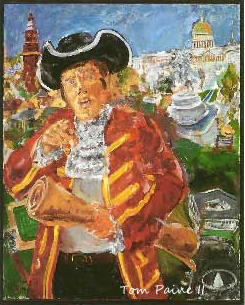(iv)
Understated
Totals. In conclusion, the 2011
GAO report estimates initial losses
for four years due to start-up costs, and a net benefit after 30 years of only
$5.6 billion, if that. In fact, because
coins are United States currency, the
government would also benefit from: (a)
an early gain of $13.75 billion
against the debt held by the public, from replacing the present 9.5 billion
dollar bills with 150% as many coins; (b) a further gain in excess of $30
billion from coins added over the 30 years; and (c) a further $14.5
billion gain from 81.5% of the interest relief per note replaced by a
coin. Hence, the net government benefit
after 30 years would exceed $58 billion, as a matter of accounting fact.
(v) Treasury Cover-Up. In 1990, 1993, 1995, and 2000, GAO reports
answered the coin-swap question using the same grossly false Federal Reserve
model. Throughout, the Treasury provided guidance and comments that
approved the Federal Reserve model as reasonably accurate, while knowing better
by long rooted, ongoing accounting practice"
The literally gross and arithmetically slashed falsity of
the long implanted Federal Reserve's model for answering the coin-swap question
is revealed by the technically correct debate over the proposed trillion-dollar
coin. In the last three years, the
Federal Reserve has issued a couple of trillion new dollars to private banks
(via so-called quantitative easing), during which time the public debt
ballooned. Informed people now recognize
that, had the United States itself issued a couple of trillion-dollar coins,
the public debt would now be less by a similar sum, plus interest savings on
that reduction. Yet the aforesaid official
model outrageously insists that there is absolutely zero benefit to the government when it issues dollar coins, instead
of the Federal Reserve issuing the same amount in notes.
Congress and the media swallow whole the GAO-laundered financial
fraud. Last year, Senate Bill S. 2049
proposed to replace all one-dollar bills with one-dollar coins. Based on the grossly underestimated benefit to
the government, which all parties accepted as reasonably accurate, the bill
died in committee. The latest (eighth)
GAO report was the primer for yet another congressional hearing last November, as
usual rendered farcical by the bipartisan adoption of the GAO's gross underestimates.
My hope is that once the public is authoritatively
informed by the courts, and by you and me, that the Federal Reserve, the
Treasury, and the GAO have for decades gone to great lengths to cover up some niggling
truth about the pesky little one dollar coin, it will ask itself why, and so come
to realize that trillions of face-value tax dollars have long and invisibly been
siphoned off to private banks. Perhaps this
revelation will lead to new and experimental issues of true United States notes; to the gutting of the public debt; to the unsticking and smoothing of the economy.
Dream on? Not exactly. The one-dollar coin-swap controversy foreseeably
entails an eventual tipping point in public awareness.
The question to press is
not whether a hypothetical trillion-dollar coin is a joke. The question to press is whether an ongoing
official concealment of over 50 billion tax dollars is a joke.
(Note: You can view every article as one long page if you sign up as an Advocate Member, or higher).





